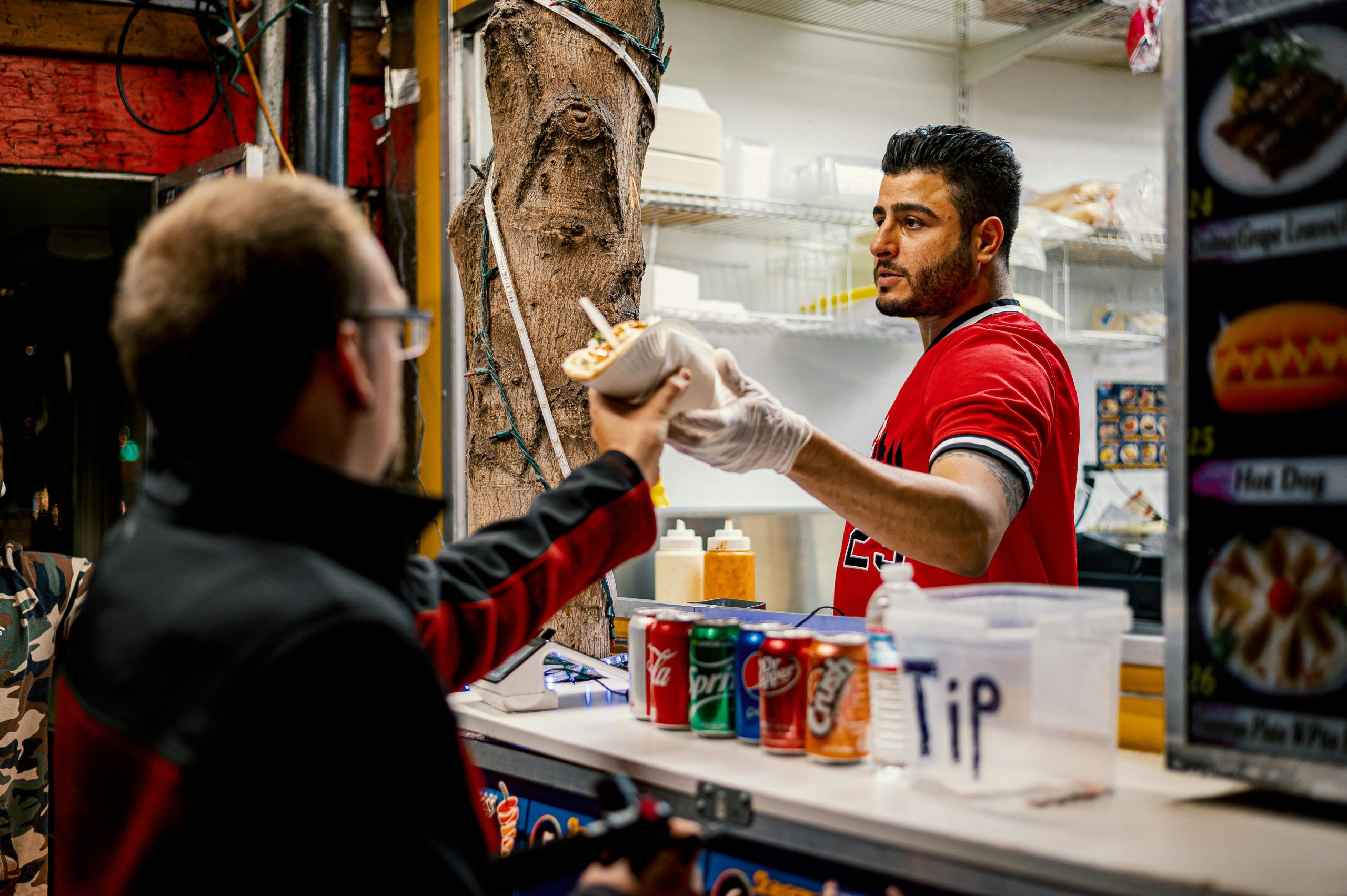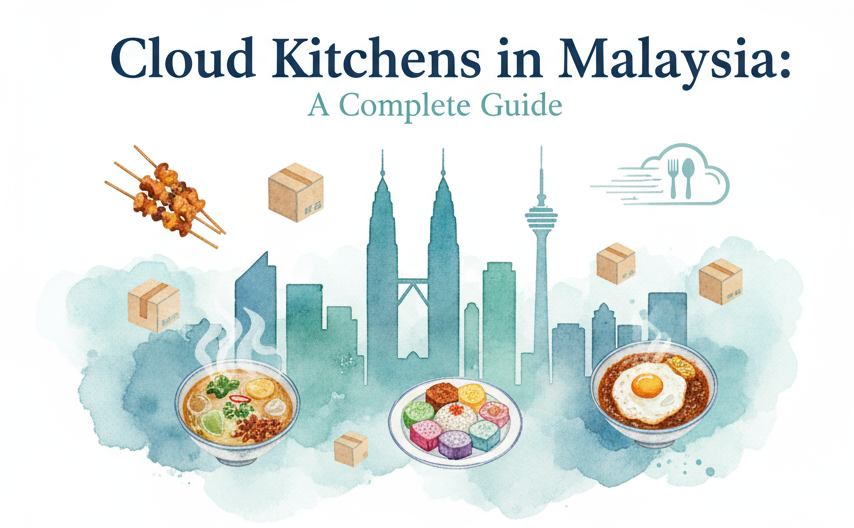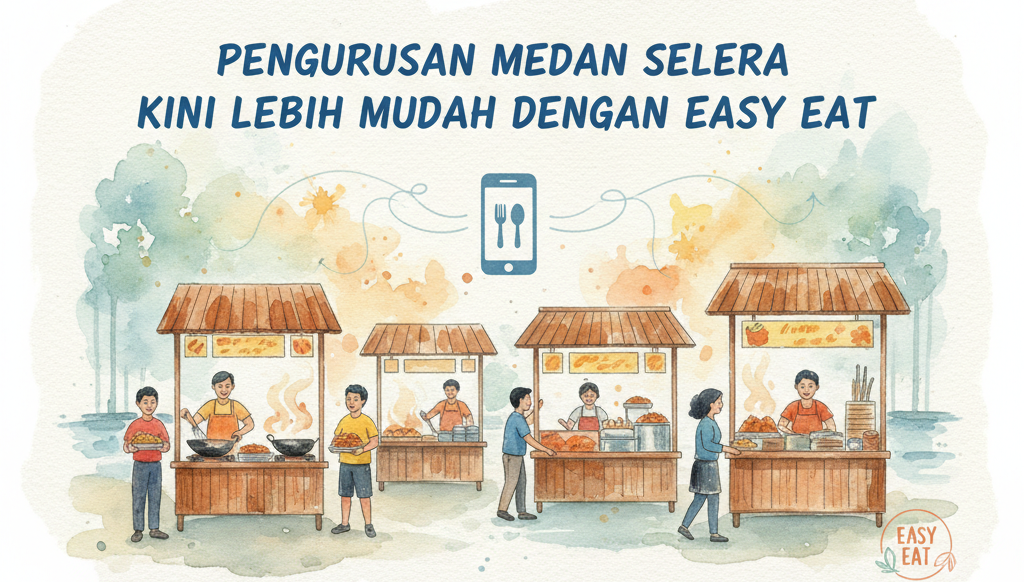When you’re planning to open a food court or develop a new food court concept in Malaysia, you need to start by analyzing the local market. The key to a successful food court concept is knowing who your potential customers are, what they want to eat, and how you can stand out among your competition. By understanding local demographics, food trends, and your competitors, you can create a food court concept that fits your location and attracts a steady customer base.
Here’s how you can break it down and apply these insights to create a food court in Malaysia that thrives.
1. Understanding Local Demographics
Why are demographics important?
Demographics are the backbone of your food court concept idea. By knowing who lives or works in the area where you’re planning to open your food court, you’ll know the types of food they’re likely to enjoy, their spending habits, and the atmosphere they prefer.
Key demographic factors to consider:
- Age: The age group of the people in the area matters because young adults, families, and elderly people all have different tastes and preferences. For example, if your food court is in a college area like Universiti Malaya in Kuala Lumpur, you’ll likely attract students. They might prefer budget-friendly, trendy options like bubble tea, affordable sushi, or quick bites like burgers. On the other hand, if your food court is in a residential area with families, you might want to offer family-friendly meals such as local comfort food like nasi lemak or international options like pasta and pizza.
- Income Levels: Look at the income range of the people in your target location. For example, a food court in an upscale area like Mont Kiara in Kuala Lumpur might attract customers with a higher spending capacity. You could offer gourmet food stalls or specialized cuisine, such as premium coffee, artisan sandwiches, or fusion dishes. In contrast, a food court in a middle-income neighborhood would do better with affordable, local meals like chicken rice, mee goreng, or a mixed rice stall.
- Cultural Preferences: Malaysia is a melting pot of cultures, and this will influence the types of food your customers prefer. In areas with a large Malay population, you might focus more on halal food options. In Penang, where there’s a strong Chinese community, offering local delicacies like char kuey teow or Hokkien mee might attract more customers.
2. Identifying Food Trends
Once you know who your customers are, the next step is understanding what’s trending in the food scene. In Malaysia, food trends change constantly, but some consistent trends can guide your food court concept idea.
Popular Food Trends in Malaysia:
- Health-Conscious Eating: More Malaysians are becoming health-conscious, particularly in urban areas. Offering healthier alternatives can help you stand out. Consider adding a salad bar, fresh juice stalls, or stalls offering vegetarian or vegan options. The demand for organic and gluten-free food has also been growing, especially in cities like Kuala Lumpur and Penang.
- Fusion Cuisine: Malaysia’s love for food that blends different cultures is timeless. Fusion dishes that mix Western and local flavors tend to draw attention. For instance, stalls offering “spicy rendang pizza” or “satay burritos” are becoming popular as they offer something unique but still familiar.
- Local Street Food with a Twist: Malaysians love their local street food. But modernizing it by offering food in creative presentations can add excitement. Think of stalls that offer deconstructed nasi lemak served in bowls with different toppings or a food stall that serves classic roti canai with various dipping sauces from around the world.
- Food Delivery Integration: With the rise of GrabFood and Foodpanda, consider offering stalls in your food court that cater to online orders. Many food courts in Malaysia now have separate counters for takeaway orders or even offer delivery-only options.
3. Assessing the Competition
Knowing your competitors is just as important as knowing your customers. If you don’t know what’s already available, you might end up offering something that’s not needed or lose out to a more established food court.
Questions to ask when analyzing the competition:
- What food stalls are popular in other food courts? For example, many successful food courts in Malaysia, such as Lot 10 Hutong in Kuala Lumpur or Gurney Drive Hawker Center in Penang, have popular stalls that focus on local dishes like asam laksa, char kuey teow, and satay. These types of food never go out of style in Malaysia.
- What makes the competitors successful? Visit popular food courts and analyze what attracts people. Is it their pricing, unique food offerings, or convenience? In many food courts in Malaysia, stalls offering a variety of food options, from local favorites to international cuisine, tend to do well. For example, food courts like Pavilion Kuala Lumpur’s Food Republic succeed by mixing local street food vendors with international chains.
- What gaps can you fill? Look for opportunities where there’s a gap in the market. If nearby food courts mostly offer traditional Malaysian food, consider creating a more international food court concept. You could have stalls that offer Japanese ramen, Italian pasta, and Mexican tacos alongside local food. This can attract customers looking for variety.
4. Crafting Your Food Court Concept
Once you have gathered all the necessary information about local demographics, food trends, and competitors, it’s time to craft your unique food court concept idea.
Here are some ideas to help you develop a successful food court concept:
- Local and International Mix: A balance of local street food and international cuisine can attract a wider customer base. For example, you can have a stall offering traditional Penang laksa next to one offering Korean BBQ.
- Create a Unique Atmosphere: Many food courts in Malaysia now focus on creating an attractive environment. Look at the design of trendy food courts like The Food Merchant in Pavilion Bukit Jalil. They combine good food with an Instagrammable setting. Even if your food court is small, creating a cozy, clean, and visually appealing space will make people want to stay longer and come back.
- Focus on Convenience: In Malaysia, people often look for quick and efficient service, especially during lunch breaks. Make sure your food court design allows for easy navigation, with clear signages for each stall. Consider introducing digital ordering systems or QR code payments to reduce waiting times.
- Specialize in Niche Food: If the area has a very specific demographic, consider specializing in one type of food. For example, if you’re opening in an area popular with tourists like Bukit Bintang, a food court offering a variety of Malaysian street food specialties like satay, rojak, and cendol might be more successful than one offering a random mix of food.
5. Adapting and Evolving
Remember that food trends and customer preferences are always changing. Keep an eye on what’s happening in the food scene, especially in your local area. Whether it’s a growing interest in plant-based diets or a new craze like Korean hotpots, staying flexible with your food court concept will help you remain competitive.
For example, food courts in Malaysia like Sunway Pyramid’s food court have evolved by introducing more international cuisines to cater to the mall’s diverse visitors. Adapting to these changes ensures your food court stays relevant and continues attracting customers.
Creating a successful food court concept in Malaysia starts with a deep understanding of your local customers, the food trends they follow, and the competition you face. By analyzing local demographics, staying updated on food trends, and offering something unique, you can create a food court concept that stands out and consistently attracts a steady stream of customers. Whether it’s a trendy food court in Kuala Lumpur or a neighborhood favorite in Penang, putting in the effort to research and plan your concept is the key to long-term success.




